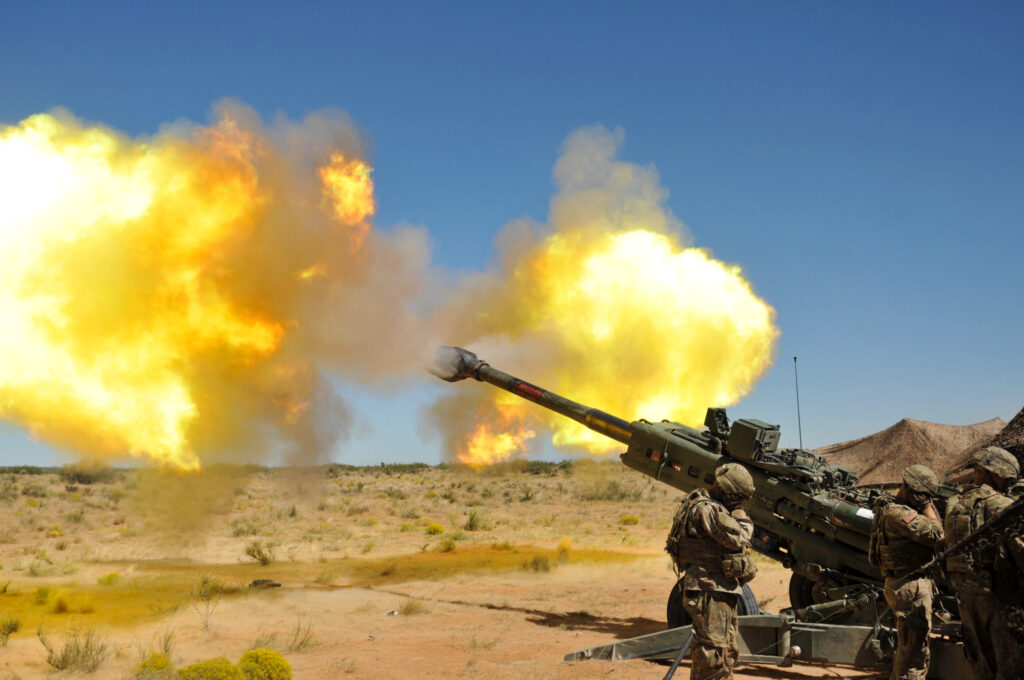There’s nothing more confusing to average folks than military acronyms. The U.S. Army has a lot of them. One that is important for taxpayers to understand is DOTMLPF, pronounced in military parlance “Dot-Mil-P-F.” What in the world does that mean? In short, it stands for Doctrine, Organization, Training, Materiel, Leadership (including Education), Personnel, and Facilities.
These areas compose a framework to determining the acceptability, suitability, and feasibility of a proposed force design for the Army, both now and in the future. It’s a process not commonly understood by most civilians. And given the public’s mounting concern over the credibility of the military in recent years, I thought it would be wise to highlight this framework. Why? Because taxpayers need to appreciate it.
First there is Doctrine. Every service has a warfighting doctrine that describes how it will conduct combat operations to fight and win. When I was in the Army, that doctrine was referred to as Air/Land Battle. It emphasized close coordination between land forces acting as an aggressively maneuvering force, and air forces attacking rear-echelon forces feeding front line enemy forces. Indeed, it’s still valid in many ways even as the Army moves to what it terms Multi-Domain Operations (MDO). That new twist in doctrine describes how the U.S. Army, as part of a joint force, will counter and defeat near-peer adversaries (read Russia and China) in several domains (air, land, sea, space, and cyberspace) both in peacetime competition and armed conflict. Doctrine is important because the Army’s structure is based on what we say we must do in war.
Second is Organization. That is how we build the structure within which soldiers will engage our opponents. In the Army, that encompasses every level of combat structure from squad to Corps. The Army has much work to do in this area. We made some very poor decisions on structure during the 20 years we were fighting insurgency wars. Those bad structural decisions moved us in the wrong direction to be prepared for conventional warfare, what we now term Large Scale Combat Operations (LSCO). A proper organizational structure fulfills doctrinal requirements while undergirding other important considerations.
Third is Training. This is key. It’s how we prepare to fight tactically, including training for individual servicemembers (both technical and tactical), as well as unit training, joint exercises, and simulated war games. And it must be realistic to be effective. And it’s expensive.
Fourth is Materiel, a very important area. Napoleon was fond of saying “amateurs discuss tactics: professionals discuss logistics.” If you don’t have the best equipment (big bucks) as well as support for it and the people who use it, nothing else matters. You must have what is needed to equip the force so that it can operate effectively. That includes weapons systems, spare parts, and consumable supplies. Without it the best doctrine, organization, and training in the world is inconsequential. That’s not cheap either.
Fifth is Leadership and Education working together. Leadership involves the people who direct and motivate others to accomplish the mission and perfect the organization. That’s not just the big brass. It’s corporals and sergeants leading squads, lieutenants leading platoons, captains commanding companies, majors in staff work, lieutenant colonels commanding battalions, colonels directing brigades, and generals who provide leadership at division, corps, and above. Where do you get them? From society, and they need to be the best among us, which is why they must be well-educated. Education is vital in preparing combat leaders, including training, experience, and self-improvement to hone a professional and competent force. We have some real challenges here, particularly with the “woke” nonsense that has nothing—not a speck—to do with combat readiness.
Sixth is Personnel. You must have people—good ones—to meet the expectations of the fighting force, both those in uniform as well as Army civilians who provide vital support. The military has some real challenges here. Many of the young people graduating from high school do not meet the intellectual and physical requirements for military service. That is a horrible statement about the condition of public education in America and it deserves the attention of every taxpayer. Remember that when someone wants to be elected to your local school board.
Finally, there are Facilities, the real property, installations, and industrial plants that support our forces from bases to government-owned ammunition factories. We must have them. The war in Ukraine has made this clear with the U.S. providing arms and munitions from our strategic stocks. Those stocks are now depleted and, lo and behold, our capacity is being taxed to replenish them. This isn’t something that can wait until war comes your way.
So, as you struggle with inflation, wokism, and hurricanes, remember this: DOTMLPF. It is a very logical way to ensure we can fight and win when we must.
L. Scott Lingamfelter is a retired U.S. Army Colonel and author of “Desert Redleg: Artillery Warfare in the First Gulf War” (University Press of Kentucky). He also served in the Virginia General Assembly from 2002 to 2018. His upcoming book, ” Yanks in Blue Berets: American UN Peacekeepers in the Middle East, will be released on July 4th, 2023.

